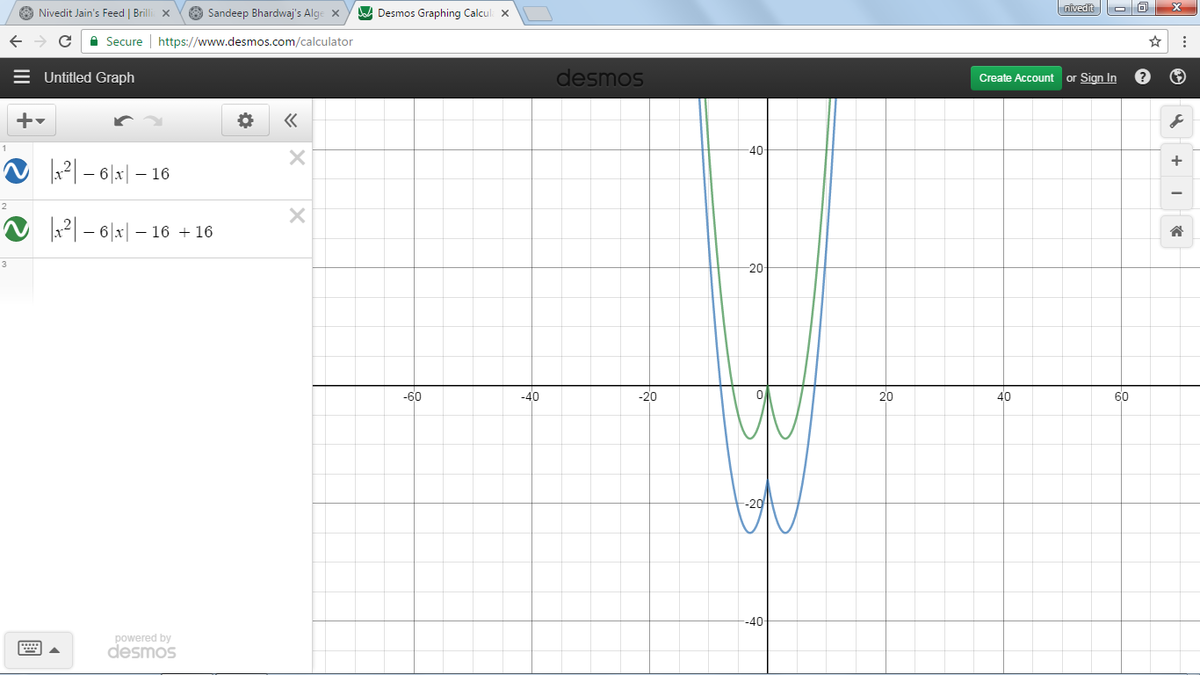Primitive Modular Quadratics. Part II
Find the max. value of such that the equation has exactly three real and distinct roots.
This section requires Javascript.
You are seeing this because something didn't load right. We suggest you, (a) try
refreshing the page, (b) enabling javascript if it is disabled on your browser and,
finally, (c)
loading the
non-javascript version of this page
. We're sorry about the hassle.

Taking g(x) - A = 0 => |x|^2 - 6*|x| - 16 - A = 0, the quadratic formula produces roots:
|x| = [6 (+/-) sqrt[36 + 4(1)(16+A)]]/2 = 3 (+/-) sqrt(25+A)
or [|x| - (3+sqrt(25+A))][|x| - (3-sqrt(25+A))] = 0 (i).
The positive integer choices of A = {2,4,6} will each result in the factored quadratic:
(|x| - p)(|x| - q) = 0 (ii)
where p & q are non-zero reals. These values of A will each produce four distinct real roots x = {-p, p, -q, q} for (ii). If we choose A = -16 for (i), then we obtain:
[|x| - (3+sqrt(9))][|x| - (3-sqrt(9))] = 0 => (|x| - 6)*|x| = 0
which yields the three distinct real roots x = {-6, 0, 6}.